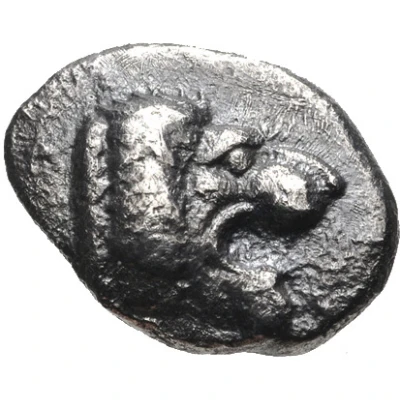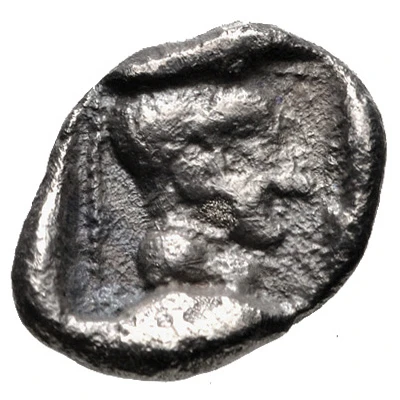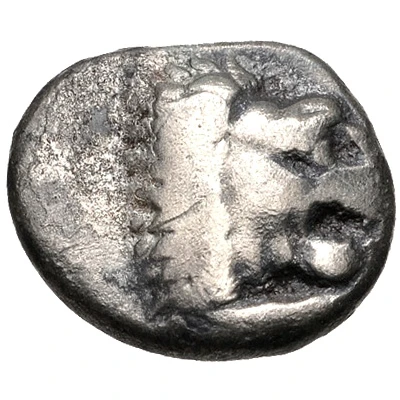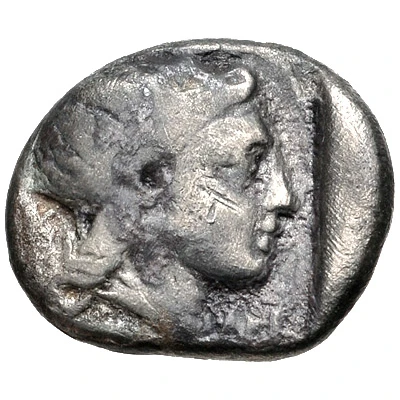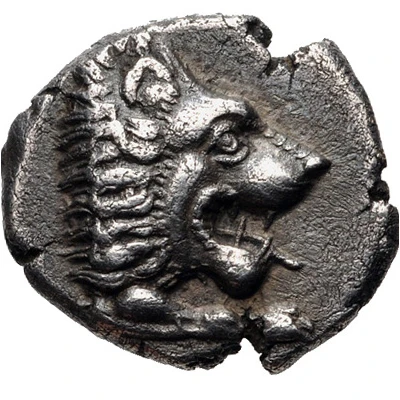
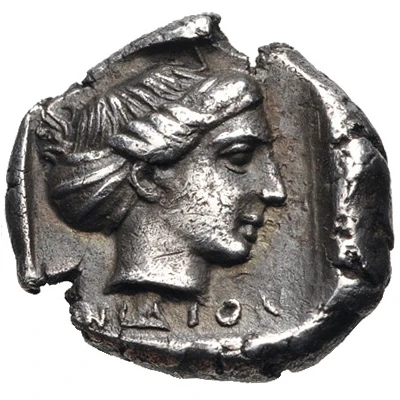

© Classical Numismatic Group, Inc.
Diobol 404 BC - 395 BC
| Silver | 1.71 g | 12.0 mm |
| Issuer | Knidos (Caria) |
|---|---|
| Type | Standard circulation coin |
| Years | 404 BC - 395 BC |
| Value | Diobol (⅓) |
| Currency | Drachm |
| Composition | Silver |
| Weight | 1.71 g |
| Diameter | 12.0 mm |
| Shape | Round (irregular) |
| Technique | Hammered, Incuse |
| Demonetized | Yes |
| Updated | 2024-10-10 |
| Numista | N#150221 |
|---|---|
| Rarity index | 100% |
Reverse
Head of Aphrodite right, hair in ampyx and sakkos. KNIΔION below and all within incuse square
Script: Greek
Lettering: KNIΔION
Comment
Unpublished denomination for issue, cf. SNG Keckman 163 (drachm); cf. Traité II 1623 and 1634 (drachms); cf. SNG Copenhagen 258 (drachm); cf. Winterthur 3415 (drachm).
Interesting fact
The Diobol coin was used as a form of currency in ancient Greece, specifically in the city of Knidos (Caria) during the 5th century BC. It was made of silver and weighed approximately 1.71 grams. Despite its small size, the Diobol was an important coin in the ancient Greek economy, as it was used to purchase everyday items like bread, wine, and other household goods. In addition, the Diobol coin features an interesting design. On one side, it depicts the head of the Greek goddess Athena, while on the other side, it shows an owl, which was a symbol of wisdom and intelligence in ancient Greek culture. The owl was also associated with the goddess Athena, who was revered as the patron deity of the city of Knidos. Overall, the Diobol coin is a fascinating piece of history that provides insight into the economic and cultural practices of ancient Greece.
